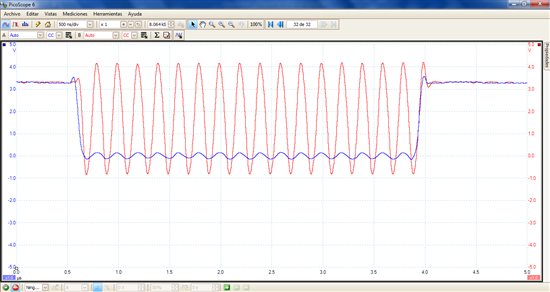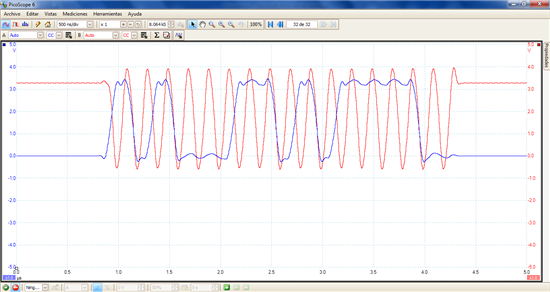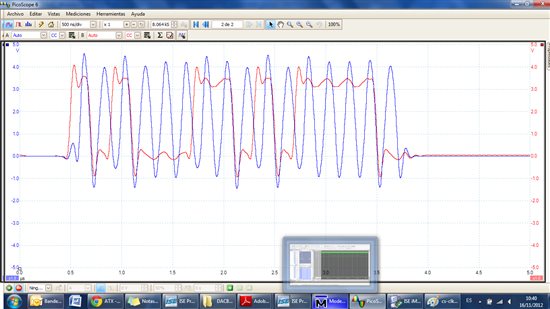Hi everyone,
I have a DAC8581EVM board with a DAC8581 unit. I have designed an VHDL interface on a FPGA in order to introduce the SPI data. When I connect the development board with the FPGA and the power supplies, I get a wrong output voltage.
Here are the connections I have implemented:
ANALOG POWER SUPPLIES
=======================
Vcc <= +11.70 V (to AGND)
Vss <= -11.70 V (to AGND)
AVdd <= +5.10 V (to AGND)
AVss <= -5.10V (to AGND)
AGND <= AGND
DIGITAL POWER SUPPLIES
=======================
+5VD <= +5.10V (to DGND)
+3VD <= +3.3V (to DGND)
DGND <= AGND
DAC DATA (J2)
============
J2-1 <= CSn;
J2-3 <= SCLK
J2-11 <= SDIN
J2-14 <= CLRn
When SDIN <= "4000", the output voltage at TP5 = 3.5 V, but the datasheet indicates that it should be 2.5V. With other values there are discrepacies too, as shown in the table below:
SDI Value Expected value Obtained value Error
============ ============ =========== ====
0x7FFF 5V 4,02V 19,6%
0x4000 2,5V 3,49V 39,6
0x0000 0V 0V 0%
0xC000 -2,5V -2,2V 12%
0x8000 -5V -4,6V 8%
I expected that a 16-bit DAC should be more accurate, so I think that I am doing something wrong. If so, this mistake could be in the connection, or in the data transfer.
- Connections are explained above.
- Jumpers : all the jumpers are set as the default implementation (datasheet).
-Below there is a graphic to show the SPI Data transfer through SDI pin. The data trasnferred is A35E hex.
with SCLK frequency = 10 MHz. Below a multiple conversion is performed (the SDI data is always the same), sending data @ 200 Ksamples/s:
If anybody has worked with this DAC, or can help with the information given and the DAC datasheet, I would be very grateful for your help. If any additional information is needed, just ask.
Thank you everybody in advance,
Alberto








